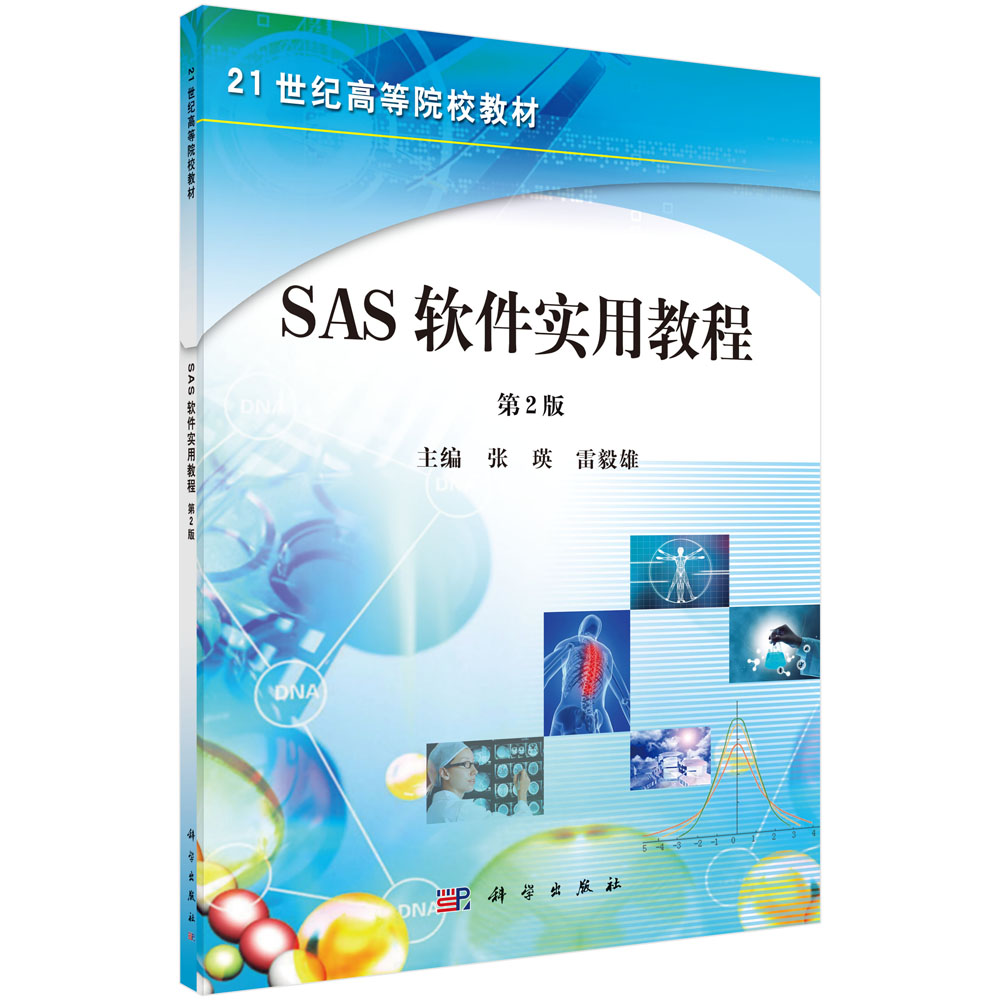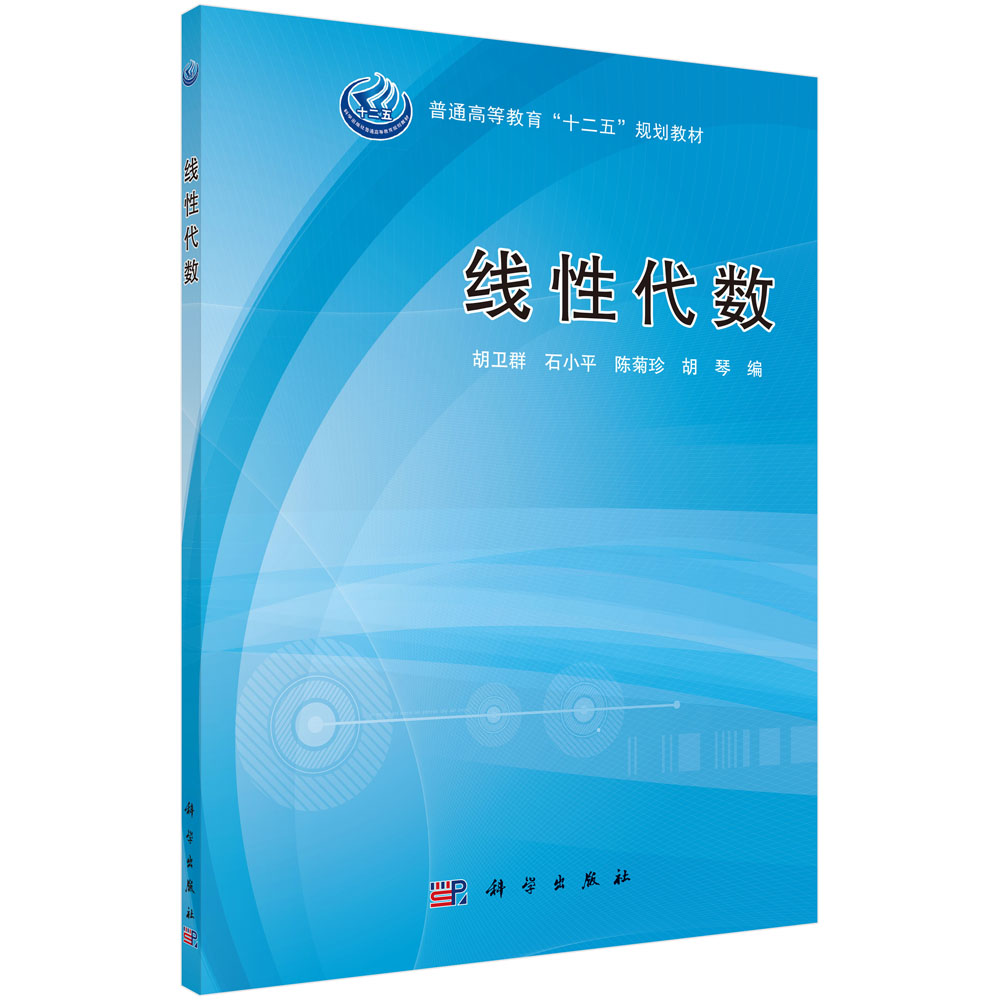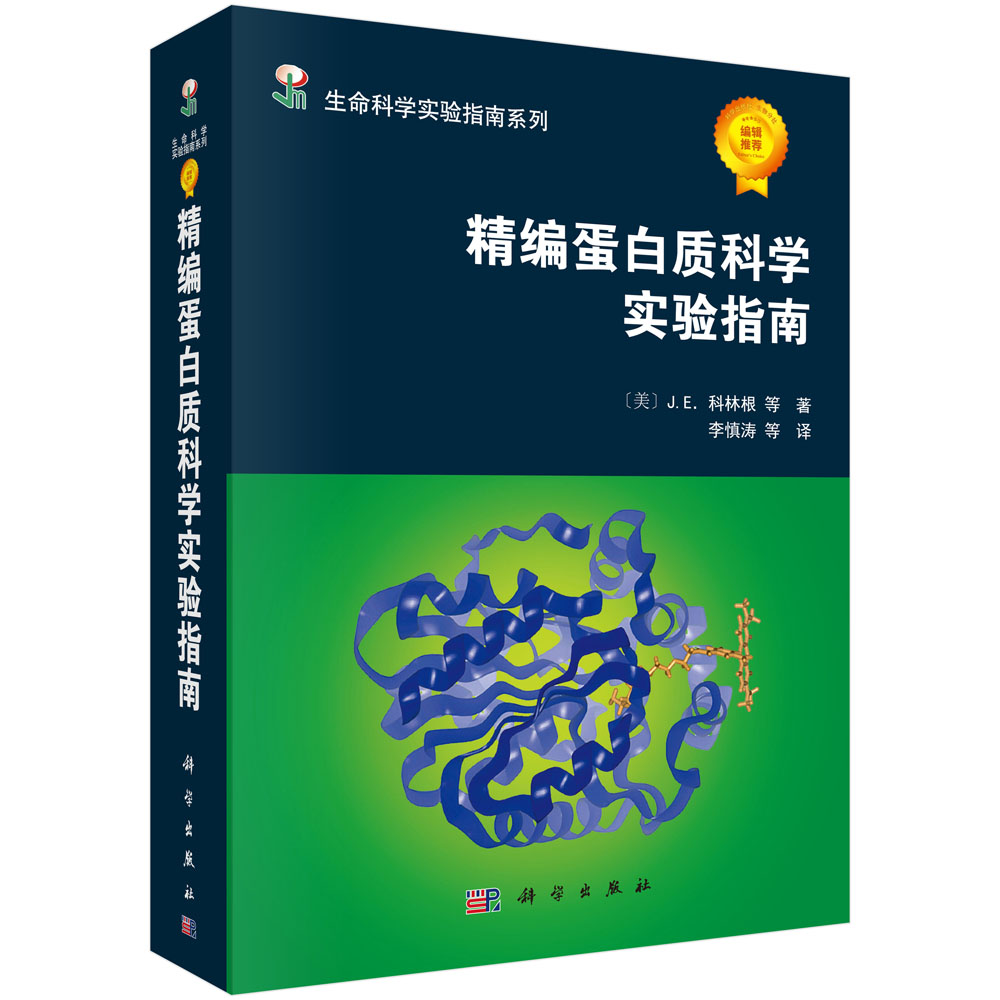本书是“十二五”普通高等教育本科国家级规划教材,也是国家精品课程、国家级精品资源共享课配套教材.
作者本着去粗取精、更新拓宽的思想科学地组织内容.全书密切结合物理实例,特别注重与后续课程的联系,并增加了一般传统教材中所没有的非线性方程、积分方程、分步傅里叶变换及小波变换等内容.全书分为复变函数论(第一篇)、数学物理方程(第二篇)、特殊函数(第三篇)和近似方法及现代内容(第四篇)四个部分.在每章后都有小结,每小节后都附有习题,习题中包含具有一定深度、难度和挑战度的题,以培养学生分析问题、解决问题的能力和创新能力.为了方便读者,每章后都有以二维码形式链接的授课课件及习题分析与讨论,书末附有习题参考答案.
样章试读
目录
- 目录
第一篇 复变函数论
第一章 解析函数 3
1.1 复数及其运算 3
习题1.1 6
1.2 复变函数 7
习题1.2 9
1.3 微商及解析函数 10
习题1.3 15
1.4 初等解析函数 16
习题1.4 22
1.5 解析函数的几何性质 23
习题1.5 28
本章 小结 29
第二章 解析函数积分 30
2.1 复变函数的积分 30
习题2.1 32
2.2 柯西定理 33
习题2.2 38
2.3 柯西积分公式 38
习题2.3 44
本章 小结 45
第三章 复变函数级数 46
3.1 复级数 46
3.2 幂级数 49
习题3.2 51
3.3 泰勒级数 51
习题3.3 54
3.4 洛朗级数 55
习题3.4 60
3.5 单值函数的孤立奇点 61
习题3.5 65
本章 小结 67
第四章 解析延拓Γ函数B函数 68
4.1 解析延拓 68
习题4.1 70
4.2Γ函数 71
习题4.2 73
*4.3 B函数 74
习题4.3 75
本章 小结 76
第五章 留数理论 77
5.1 留数定理 77
习题5.1 81
5.2 利用留数理论计算实积分 82
习题5.2 86
5.3 物理问题中的几个积分 87
习题5.3 90
*5.4 多值函数的积分 91
习题5.4 93
本章 小结 95
第二篇 数学物理方程
第六章 定解问题 99
6.1 引言 99
6.2 三类数理方程的导出 101
习题6.2 105
6.3 定解条件 106
习题6.3 110
本章 小结 111
第七章 行波法 112
7.1 无界弦的自由振动达朗贝尔公式 112
习题7.1 116
7.2 无界弦的强迫振动 117
习题7.2 121
*7.3 三维无界空间的自由振动泊松公式 121
习题7.3 127
*7.4 三维无界空间的受迫振动推迟势 127
本章 小结 130
第八章 分离变量法 131
8.1 有界弦的自由振动 131
习题8.1 138
8.2 非齐次方程纯强迫振动 140
习题8.2 143
8.3 非齐次边界条件的处理 144
习题8.3 148
8.4 正交曲线坐标系中的分离变量法 148
习题8.4 157
本章 小结 159
第九章 积分变换法 160
9.1 傅里叶变换 160
习题9.1 167
9.2 傅里叶变换法 169
习题9.2 172
9.3 拉普拉斯变换 173
习题9.3 179
9.4 拉普拉斯变换法 180
习题9.4 182
本章 小结 184
第十章 格林函数法 185
10.1δ函数 185
习题10.1 188
10.2 边值问题的格林函数法 189
习题10.2 195
10.3 稳恒问题的格林函数 195
习题10.3 198
10.4 电像法与狄氏格林函数 199
习题10.4 204
*10.5 含时问题的格林函数法 205
习题10.5 210
本章 小结 211
第三篇 特殊函数
第十一章 勒让德多项式 215
11.1 勒让德多项式 215
习题11.1 220
11.2 勒让德多项式的性质 220
习题11.2 226
11.3 连带勒让德函数与球函数 227
习题11.3 232
本章 小结 233
第十二章 贝塞尔函数 234
12.1 贝塞尔函数 234
习题12.1 239
12.2 贝塞尔函数的性质 239
习题12.2 245
*12.3 其他柱函数 246
习题12.3 253
本章 小结 256
第十三章 施图姆-刘维尔理论 258
13.1 施图姆-刘维尔本征值问题 258
习题13.1 261
*13.2 高斯方程和库默尔方程 262
本篇 主要特殊函数性质小结 265
*第四篇 近似方法及现代内容
第十四章 变分法 269
14.1 泛函和泛函的极值 269
习题14.1 277
14.2 用变分法解数理方程 278
习题14.2 285
本章 小结 286
第十五章 非线性方程 287
15.1 非线性方程的某些初等解法 287
习题15.1 292
15.2 孤波和孤子 292
习题15.2 297
15.3 解析近似法之正则摄动法 298
习题15.3 301
15.4 数值解法之分步傅里叶变换法 301
本章 小结 305
第十六章 积分方程 306
16.1 积分方程的几种解法 306
习题16.1 312
16.2 施密特-希尔伯特理论 313
习题16.2 316
16.3 维纳-霍普夫方法 316
习题16.3 318
本章 小结 319
第十七章 小波变换 320
17.1 小波变换的由来 320
17.2 小波变换 323
习题参考答案 327
参考文献 349
附录350
Ⅰ.矢量微分算子与拉普拉斯算符 350
Ⅱ.傅里叶变换简表 352
Ⅲ.拉普拉斯变换简表 353
索引 355
Contents
Part One Theory of Complex Variable Function
Chapter 1 Analytic Function 3
1.1 Complex numbers and their operations 3
Problem 1.1 6
1.2 Function of a complex variable 7
Problem 1.2 9
1.3 Derivative and analytic function 10
Problem 1.3 15
1.4 Elementary analytic functions 16
Problem 1.4 22
1.5 GeometricProperties of analytic functions 23
Problem 1.5 28
Summary for chapter 1 29
Chapter 2 The Integral of the Analytic Function 30
2.1 The integral of the variable function 30
Problem 2.1 32
2.2 The Cauchy theorem 33
Problem 2.2 38
2.3 Cauchy integral formula 38
Problem 2.3 44
Summary for chapter 2 45
Chapter 3Series of Complex Variable Function 46
3.1 Complex series 46
3.2 Power series 49
Problem 3.2 51
3.3 Taylor series 51
Problem 3.3 54
3.4 Laurent series 55
Problem 3.4 60
3.5 The isolated singularity of the single valued function 61
Problem 3.5 65
Summary for chapter 3 67
Chapter 4 Analytic ContinuationΓ FunctionB Function 68
4.1 Analytic continuation 68
Problem 4.1 70
4.2 Γ function 71
Problem 4.2 73
*4.3 B function 74
Problem 4.3 75
Summary for chapter 4 76
Chapter 5 The Residue Theory 77
5.1 The Residue theorem 77
Problem 5.1 81
5.2 Real integral calculated by the Residue theorem 82
Problem 5.2 86
5.3 Several integrals in physicalProblems 87
Problem 5.3 90
*5.4 Integrals of the multi valued function 91
Problem 5.4 93
Summary for chapter 5 95
Part TwoEquations of Mathematical Physics
Chapter 6 Complete Mathematical Models 99
6.1 Introduction 99
6.2 Derivation for three type of equations of mathematical physics 101
Problem 6.2 105
6.3 Boundary conditions and initial conditons 106
Problem 6.3 110
Summary for chapter 6 111
Chapter 7 Method of Traveling Waves 112
7.1 Solution for the free vibration of the unbounded string D’Alembert formula 112
Problem 7.1 116
7.2 Solution for the pure forced vibration of the unbounded string 117
Problem 7.2 121
*7.3 The free vibration in three dimensional unbounded space Poisson formula 121
Problem 7.3 127
*7.4 The forced vibration in three dimensional unbounded space Retarded potentials 127
Summary for chapter 7 130
Chapter 8 The Method of Separation of Variables 131
8.1 The free vibration of the bounded string 131
Problem 8.1 138
8.2 The non homogeneous equation the pure forced vibration 140
Problem 8.2 143
8.3 The treatment of the non homogeneous boundary conditions 144
Problem 8.3 148
8.4 The separation of variables in the orthogonal curvilinear coordinates 148
Problem 8.4 157
Summary for chapter 8 159
Chapter 9 I ntegral Variable Method 160
9.1 Fourier transforms 160
Problem 9.1 167
9.2 Fourier transform method 169
Problem 9.2 172
9.3 Laplace transforms 173
Problem 9.3 179
9.4 Laplace transform method 180
Problem 9.4 182
Summary for chapter 9 184
Chapter 10 Green’s Function Method 185
10.1 δ function 185
Problem 10.1188
10.2 Boundary valueProblems solved by Green’s function method 189
Problem 10.2 195
10.3 Green’s function for stableProblem 195
Problem 10.3 198
10.4 Electro image method and Dirichlet Green’s function 199
Problem 10.4 204
*10.5 Time related mathematicalProblems solved by Green’s function method 205
Problem 10.5 210
Summary for chapter 10 211
Part ThreeSpecial Functions
Chapter 11 Legendre Polynomials 215
11.1 Legendre polynomials 215
Problem 11.1 220
11.2 TheProperty of Legendre polynomials 220
Problem 11.2 226
11.3 Associated Legendre funtion and spherical function 227
Problem 11.3 232
Summary for chapter 11 233
Chapter 12 Bessel functions 234
12.1 Bessel functions 234
Problem 12.1 239
12.2 TheProperty of Bessel functions 239
Problem 12.2 245
*12.3 Other Column Functions 246
Problem 12.3 253
Summary for chapter 12 256
Chapter 13 Sturm Liouville Theory 258
13.1 Sturm Liouville EigenvalueProblem 258
Problem 13.1 261
*13.2 Gauss equation and the Kummer equation 262
Summary for theProperties of the principal special functions in part three 265
*Part FourApproximation Method and Modern Content
Chapter 14 The Variational Method 269
14.1 Functionals and functional extreme 269
Problem 14.1 277
14.2 Solving equations of mathematical physics by the variational method 278
Problem 14.2 285
Summary for chapter 14 286
Chapter 15 Nonlinear Equations 287
15.1 Some Primary solution method for nonlinear equations 287
Problem 15.1 292
15.2 Isolated wave and soliton 292
Problem 15.2 297
15.3 The regular perturbation method in analytical approximation methods 298
Problem 15.3 301
15.4 A step by step Fourier transform method for numericalapproximate methods 301
Summary for chapter 15 305
Chapter 16 Integral Equations 306
16.1 Several methods for solving integral equations 306
Problem 16.1 312
16.2 Schimidt Hilbert theory 313
Problem 16.2 316
16.3 Wiener Hopf method 316
Problem 16.3 318
Summary for chapter 16 319
Chapter 17 Wavelet transform 320
17.1 The origin of wavelet transform 320
17.2 Wavelet transform 323
Reference keys to theProblems 327
Bibliography and references 349
Appendix 350
Ⅰ.Vector Differential Operator and Laplace Operator 350
Ⅱ.Summary table of Fourier transform 352
Ⅲ.Summary table of Laplace transform 353
Index 355






























这本书非常实用